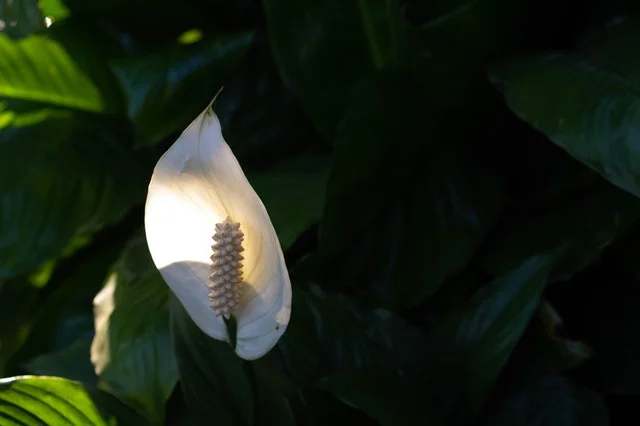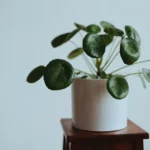Naturally, you might need to repot your Peace Lily at some growth stage, and it is wise to know when to do it.
A root-bound Lily plant will need repotting, and you might notice roots growing through the drainage holes and emerging from the soil.
You can tell that the Lily needs repotting when you slide the plant carefully to check its roots; severely bound roots are more likely to have a little absorption due to tightly packed roots.
If you fail to repot the Lily when its roots are tightly packed in a tiny space, it could die even when you generously water it as it does not absorb the water.
The water will run through the drainage holes when it is severely rooted bound, you can transplant the Peace Lily immediately, but it is wise to repot during the spring season for better survival rates.
Table of Contents
Steps for Repotting Your Peace Lily
- Select a pot larger than the current one, but it should not be extra-large as it might retain excess moisture that can make the Peace Lily roots rot. It is advisable to have a Lily pot 2 inches larger than the original one as it will give the roots adequate space while retaining enough water that will not damage the roots.
- Water the Lily in its original pot generously 24 hours before transplanting while covering the drainage hole using a coffee filter to prevent the potting mix from washing off.
- Place fresh potting mixture in the new larger container while making the pant sit on the same level as it was in the smaller pot since burying the Peace Lily too deep could make its roots rot.
- Slide the Peace Lily carefully from the old pot and tease its roots gently to free the compacted roots; however, it is wise to ensure that the plant does not lose much of the potting material from the pot.
- Place the Peace Lily in the new pot gently and start filling the pot with the potting mixture and from the plant carefully using your fingers.
- Repot and let the soil settle in the pot, water the Peace Lily, and supply the new plant with water and nutrients to survive in the new pot; after watering, you might notice that the soil fills the pot appropriately can add the soil as needed.
- Remember to repot the plant at the same levels as it was in the previous pot
What Potting Soil Does Peace Lilies Need?
A Lilly will thrive in loose and organic pot soil as they are native to tropical climates with loose soil with high organic matter. When growing it at home, you can mimic the tropical environment for better survival.
Should I Water Peace Lily after Repotting?
After repotting, you water the soil; unfortunately, you could notice that the water will look weak and wilt over the first few days.
The wilting might result from the plant’s shock in the new environment and does not mean it does not have adequate water. Signs of Peace Lily shock include leaf rolling and culling, yellowing leaves, and falling leaves.
If the plant has significant shock from transplanting, you can remedy it to prevent death. Unfortunately, if you water the Lily frequently after repotting, it results in rotting roots due to excessive water retention in the soil.
How Do You Know the Peace Lily Needs Repotting
A peace Lilly will grow in a crowded pot, but too much crowding could lead to high competition for resources such as water and sunlight.
When the Peace Lily starts to wilt more frequently, it shows that the roots have begun taking up so much space in the container, resulting in a lack of water as there will be little soil that holds the water.
The Bottom Line
Although Peace Lilies thrive in a crowded space, their roots might grow so much that it occupies so much of the pot space that there will be little space for soil that holds the water.
Peace Lilies start to wilt frequently when they outgrow the pot, which necessitates repotting. You can know that the Peace Lily requires reporting when you notice that the water flows quickly through the drain holes.
After repotting, the plant might experience shock, which does not necessarily mean that it needs watering; you should be cautious after repotting as the roots can rot from excess water in the soil.
Photo by Lucas George Wendt from Pexels



